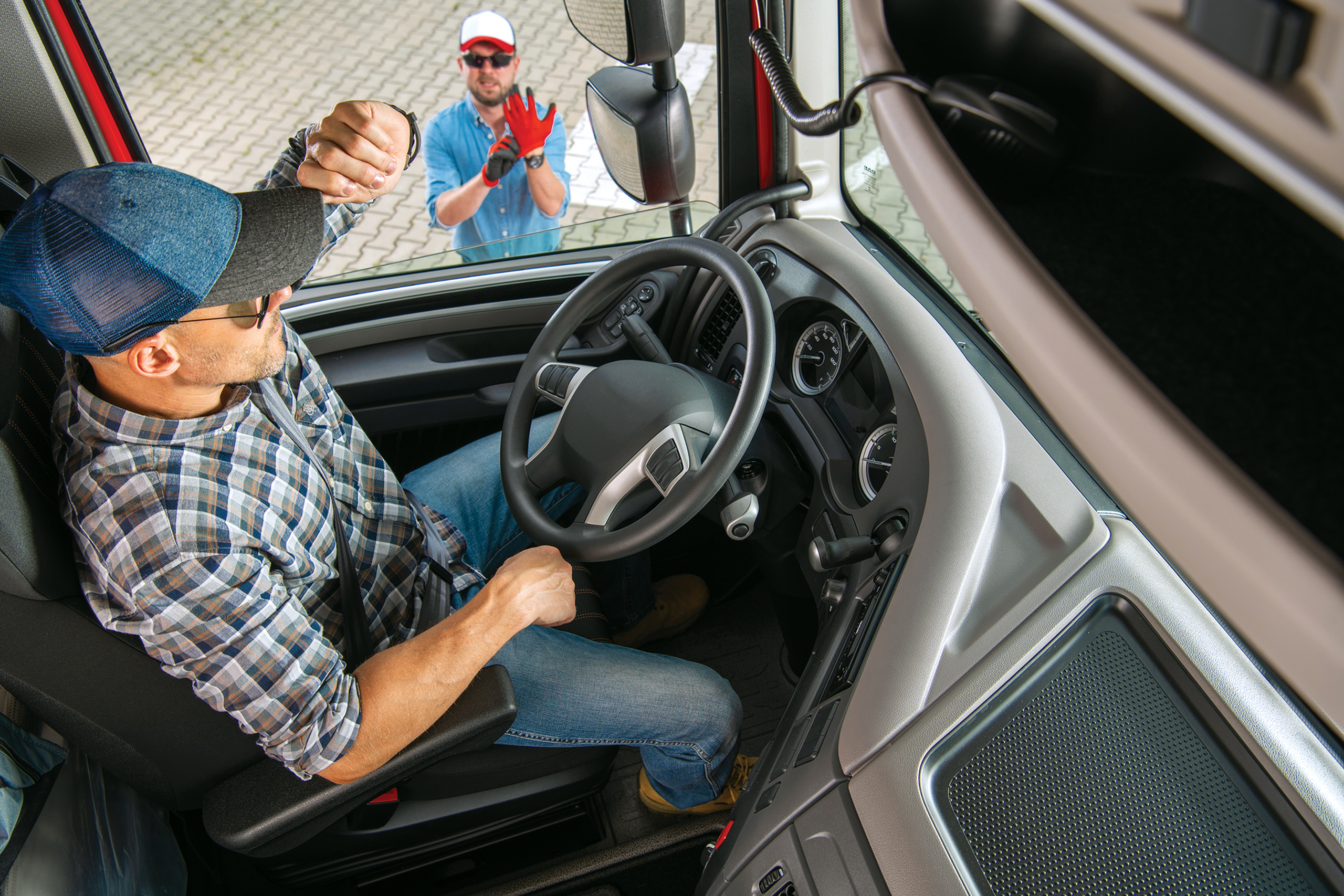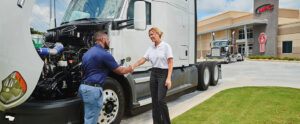The process of training to obtain a commercial driver’s license (CDL) — or to add hazardous materials (H), passenger (P) or school bus (S) endorsements to an existing CDL — has been changed by new Federal Motor Carrier Safety Administration (FMCSA) regulations that went into effect Feb. 7, 2022.
Gone are the days when an applicant could simply study a state’s CDL manual and test at the local department of motor vehicles. The days when a relative or friend could provide training are also, for the most part, gone.
The new entry level driver training (ELDT) regulations require specific training, delivered by a provider that has registered with FMCSA. The training provider must forward the driver’s information to the FMCSA, who then issues a training certificate in the driver’s name.
Without that certificate, individual states are prohibited from issuing a new CDL or adding endorsements to an existing CDL.
For drivers who are looking to get a CDL or add an H, P or S endorsement, the first step is to find a training provider. The FMCSA has a web page, tpr.fmcsa.dot.gov/search, with a search feature that allows users to find the nearest registered providers.
Before choosing a training provider, it’s important to know that the training is broken into two parts — “Theory” and “Behind the Wheel.” The applicant can choose one training provider for both or can choose different providers for each, and it doesn’t matter which part is taken first.
For example, the FMCSA registry lists more than 200 online training providers that can be used for the Theory portion of the training — in lieu of actual school attendance. The driver can then attend another program in person for the Behind the Wheel portion of the training.
The Theory portion of the training consists of subjects students can learn in a classroom or online environment. The regulations do not specify how much time must be spent on each topic; however, they do require that the student pass a written test with a score of at least 80% in order to be certified.
The regulation lists a number of items that must be included in the training. These include learning the dashboard and control systems of the vehicle, how to conduct pre- and post-trip inspections, basic control, shifting, backing and docking, coupling and uncoupling.
Also included are modules on communication, distracted driving, speed and space management, operation at night or in extreme driving conditions, and conducting a visual search.
Advanced operating practices that are taught once the basics are mastered include topics such as hazard perception, skid recovery, railroad crossings and maintenance.
Non-driving activities are covered, too, with training in the handling of cargo, environmental compliance, hours of service, fatigue, post-accident procedures, trip planning and more.
The “range,” or behind-the-wheel portion of the training contains specific topics, too. Students must learn and demonstrate pre- and post-trip inspections and then successfully perform maneuvers such as straight-line backing, alley backing (45- and 90-degree angles), offset backing and parallel parking on both the sight and blind sides of the vehicle.
The Behind the Wheel portion of the training also includes training on public roads. The topics taught in the Theory portion of the training are put into practice on the highway. Students will learn how to safely execute turns, lane changes, entering and exiting a controlled-access highway and more.
Basic vehicle operation is taught and practiced, including shifting, signaling, visual search, speed and space management, safe driving behavior, hazard perception and distractions.
A comprehensive list of the training topics, as published in the Code of Federal Regulations, can be found at ecfr.gov/current/title-49/subtitle-B/chapter-III/subchapter-B/part-380#subpart-F. That’s a long URL to enter, but the information provided is worth the effort.
The selected training provider must forward a record of the training, including test scores, to the FMCSA within 48 hours of a student’s completion of training. When the driver goes to the state’s department of motor vehicles to test for a CDL or additional endorsements, the state must verify completion of training through the FMCSA.
As with any new government program, it may take some time before all of the states are incompliance. Each will have its own requirements for testing and record-keeping, so the driver will need to understand the requirements in the state that issues the CDL.
The FMCSA allows students to train in a different state than the one that ultimately issues the CDL or adds an endorsement. Each state, however, has the authority to require training or testing beyond the FMCSA requirements. Training received from a provider in another state may not adequately cover the CDL issuing state’s requirements. It’s always best to check with the state DMV before training in a different state.
It’s also important to remember that most carriers of any size will require additional training in the form of a “driver finishing program” before allowing the new driver to take out a truck alone. This valuable training helps reinforce the CDL training already received and allows the carrier to validate the new driver’s skills. Additionally, rookie drivers will have the opportunity to learn about day-to-day life on the road and topics that aren’t taught in the training such as using fuel cards, dealing with customers and company policies.
Driver finishing also helps the new driver get a start under the mentorship of a more experienced driver, who can help prepare the student for solo operation. The finishing program is not required by the FMCSA, however, and many drivers have begun successful careers in trucking by getting a CDL and going directly to work.
For those attempting to add a hazardous materials (H) endorsement to their CDL, it’s important to note that the new training requirements do not change the requirement for background checks.
Finally, there’s a “grandfather” clause in the regulations that may exempt a driver from the new requirements. Drivers who already had a learners permit on the effective date of Feb. 7 may not have to comply. Other exceptions exist, and would-be drivers are advised to check with their state department of motor vehicles to be sure.
Cliff Abbott is an experienced commercial vehicle driver and owner-operator who still holds a CDL in his home state of Alabama. In nearly 40 years in trucking, he’s been an instructor and trainer and has managed safety and recruiting operations for several carriers. Having never lost his love of the road, Cliff has written a book and hundreds of songs and has been writing for The Trucker for more than a decade.









Hi ,if I went to United States truck driving school 15 years ago got my cdl A ,I didn’t renew my cdl but now want to get into trucking again ,do I have to do the school again